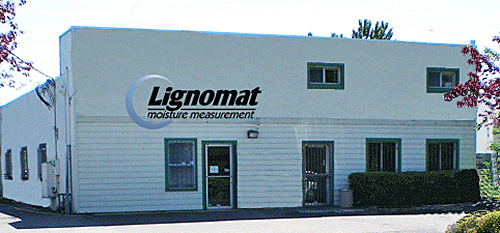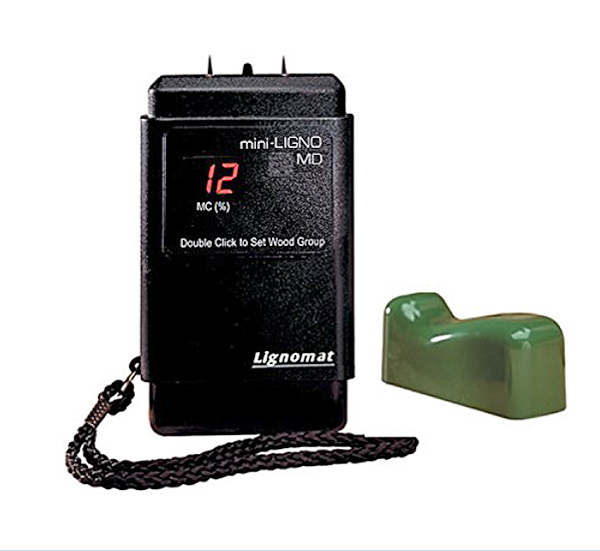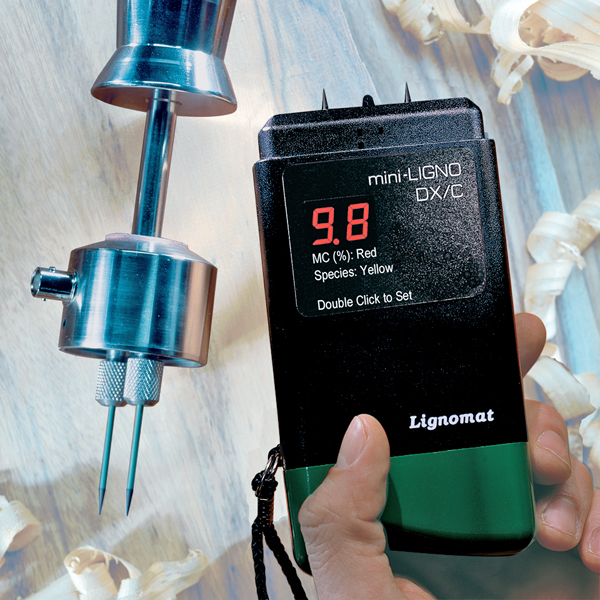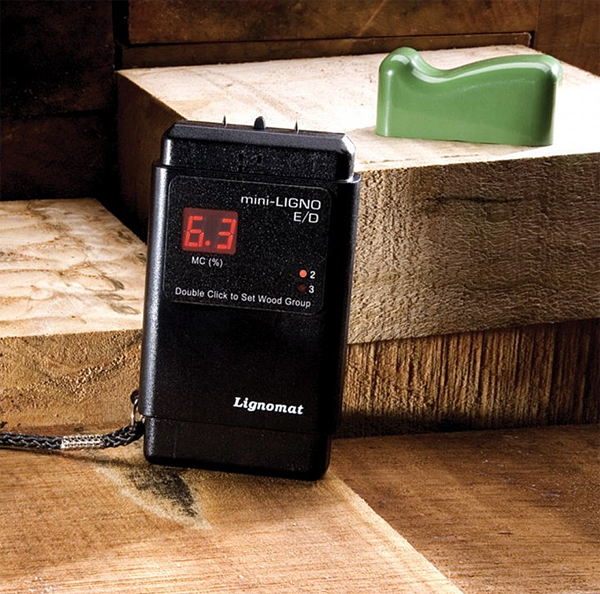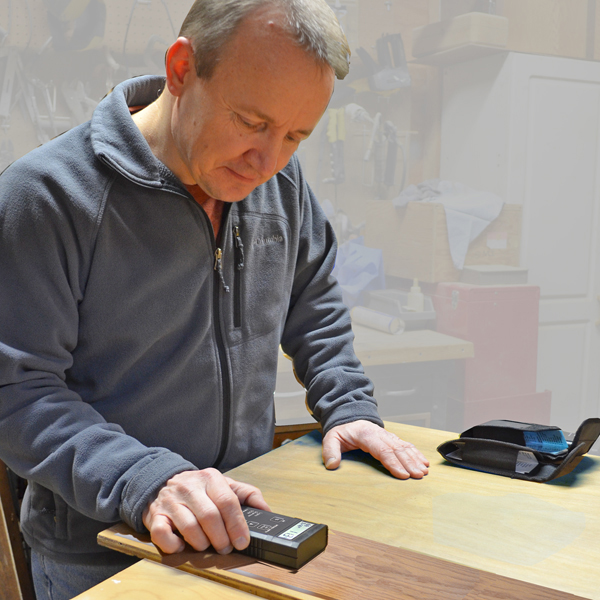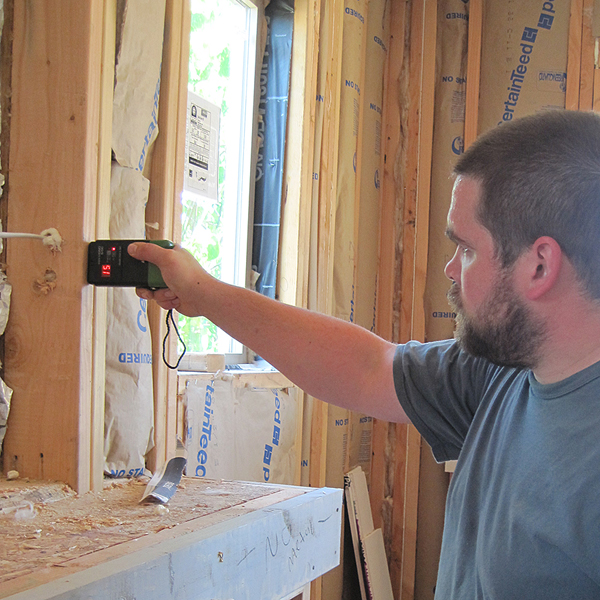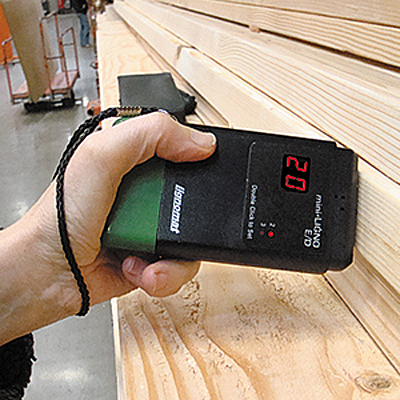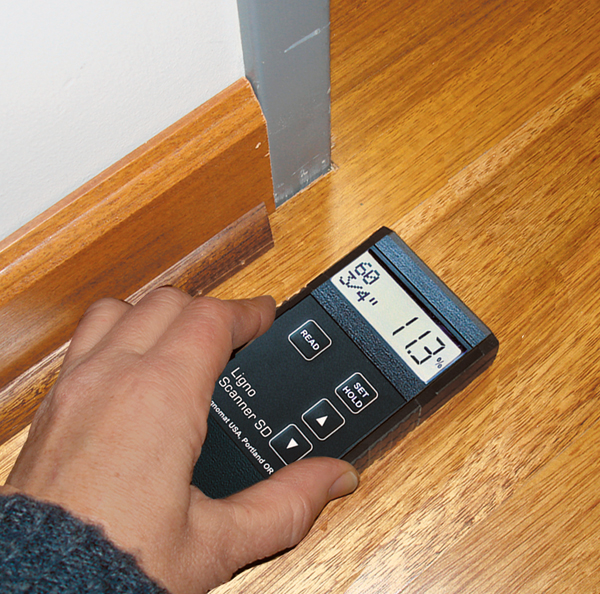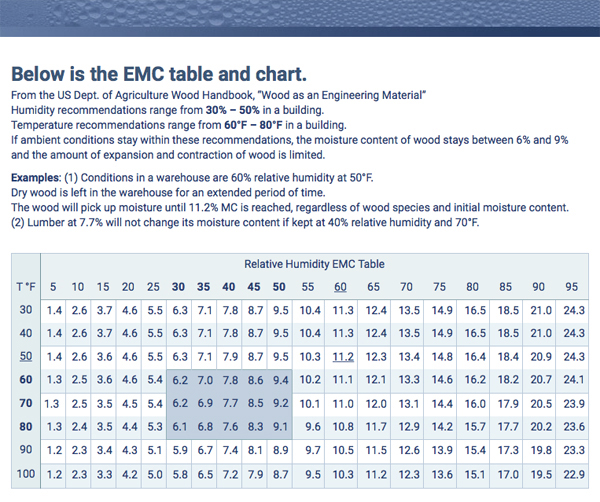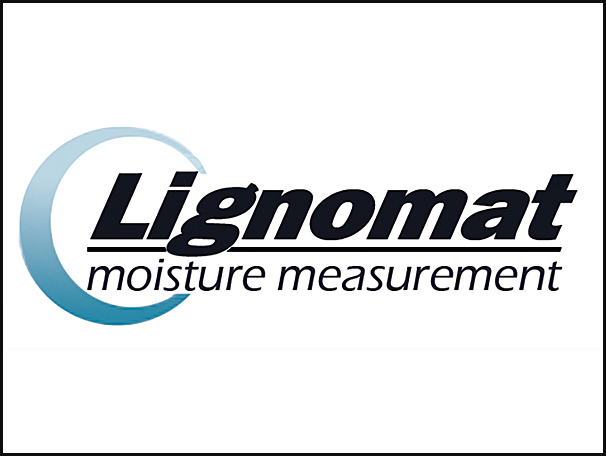
In addition to death and taxes, wood movement is one of those unavoidable truths for woodworkers. It’s influenced most dramatically by moisture, among a number other factors. And, unless you take wood’s tendency to shrink and expand into consideration, those effects can cripple a beautiful project by cracking panels or loosening joints. How dry your lumber is when you purchase it, the conditions in which you store and dry it in your shop and the manner in which you assemble and finish it in a project all impact wood movement.
Thankfully, wood movement doesn’t have to be a dire omen if you plan for it and evaluate your stock ahead of time with a moisture meter. Even if you don’t own a meter, you’ve surely seen advertisements for “pin” and “pinless” moisture meters in your favorite publications, including Woodworker’s Journal. And chances are, the first image that comes to mind is a little black palm-sized box with a green cap and a pair of pointy probes. That’s Lignomat’s mini-Ligno model. It’s been helping woodworkers “read” moisture content in their lumber for more than three decades. The mini-Ligno continues to be the most popular moisture meter used by hobbyist and professional woodworkers today.
Lignomat has focused its efforts on moisture meters and control systems for lumber kilns since it was founded in Germany in 1974. In 1981 the company located its U.S. headquarters in Portland, Oregon, and introduced the mini-Ligno to American woodworkers.
“Our mini-Ligno was the first pocket-sized moisture meter affordable for anyone working with wood,” says Grete Heimerdinger, Lignomat’s co-owner and vice president of sales and marketing.
Other moisture meters for wood were available before then, but they were bulkier and more expensive. And that was reason enough for woodworkers then to be incredulous about the need for a moisture meter in the first place. In her 28-year tenure with Lignomat, Heimerdinger has lost count of the number of times she’s been challenged to answer the essential question, “Why do I need a moisture meter?”
Her rationale, which Lignomat put on a sign and took to woodworking shows across the country, made it clear: “Avoid shrinking, warping, delamination, loose joints and foggy finishes. Protect your work. Buy a moisture meter.”
Those directives are just as true today.
Heimerdinger says Lignomat became an industry leader in the moisture meter field during those early years, in part, by educating woodworkers about wood movement at woodworking shows. There, the company “tirelessly” distributed brochures about its products. But, the quality and price of the mini-Ligno really galvanized Lignomat’s solid reputation.
Even today, Grete says, customers stop by the Lignomat booth at trade shows to tell her they don’t need a new moisture meter. “My mini-Ligno has been working for the last 25 years and I still trust its measurements. It is still accurate,” they tell her.
Of course there are always new customers who still need a moisture meter. For them, Lignomat’s product line has expanded considerably since its first mini-Ligno model of the early 1980s. The company’s most economical model — the mini-Ligno MD —sells for around $92 and has replaced the original mini-Ligno. It’s a pin-style unit with a digital LED display and offers a 6 to 20 percent testing range for wood. The mini-Ligno E/D ($119), a next step up, offers greater sensitivity than the MD model. In the critical 6 to 10 percent moisture range, it measures in 0.1 percent resolution and then, between 10 and 45 percent, it reads in full percentage steps. Expanding features yet again, Lignomat’s mini-Ligno DX/C model ($199) corrects for even more domestic and tropical wood species than other mini-Lignos.
Regardless of which model you choose, “all of our mini-Ligno options have the same dependable, long-lasting measuring circuitry,” Grete adds.
All the mini-Lignos are “pin” type moisture meters, which require pointed probes to be pushed into a board to take a reading. There also are “pinless” meters that scan wood depth without the use of metal probes. Lignomat offers two of these for woodworking: the Ligno-Scanner D and SD, which sell for around $210 and $289. There’s even a combination meter that can be used either as pin or pinless.
One of the lively debates among woodworkers is the topic of which is more accurate: pin vs. pinless. For hobbyists, Heimerdinger recommends the former. “Pin meters are less expensive and more versatile. They are not restricted to measuring only flat boards and can measure round shapes at least the size of the measuring plate.”
She also says pin meters are not restricted to the thickness of the board — and that’s a significant issue for scanning-type pinless meters, which also tend to be more expensive. Typically, the scanner’s optimal accuracy is calibrated for ¾-in. material thickness. Thinner wood may cause a pinless meter to read the moisture content as too low, or the meter actually will include the material underneath the board in its calculation, too. Lignomat accounts for this error by providing a ¼-in. setting on its pinless Ligno-Scanner SD model.
Besides pin vs. pinless, another contested issue among end users is how moisture readings should be taken. Heimerdinger offers some advice. If the board is thicker than double the measuring depth of the pin meter, she recommends cutting a piece off the end grain and taking measurements at the center of the board. For normal 1x stock, however, there is no “best” place to take a reading.
“Pin readings can be taken anywhere at the face, edge, end or underside of a board. The more readings that are taken, the more reliable the information about moisture distribution will be.”
But she recommends not averaging these percentages. Significant differences in moisture content in the same board indicate other problems with it, and it should be avoided for project use until its moisture content stabilizes. Ideally for indoor woodworking projects, boards are stable at 6 to 9 percent moisture content and will stay that way when kept in an environment with relative humidity that ranges between 30 and 50 percent.
Lignomat offers a wealth of free advice about wood movement and moisture-related issues. Find out more by clicking here.
Heimerdinger admits that while the reality of wood movement never changes, other variables do. What keeps the business of moisture meters interesting is the clientele. Lignomat customers call for advice about unusual applications, such as measuring the inside of hollow wooden statues, restoring an old wooden lighthouse, making wooden decoys, and so on. New questions come up that they’ve never heard before. There are also new wood species and wood materials that have yet to be tested.
She’s also gratified by the positive feedback.
“It’s good to hear from a new customer that a friend recommended the mini-Ligno because he or she was so pleased with its performance.”
Learn more about Lignomat’s moisture meters by visiting the company’s website.
